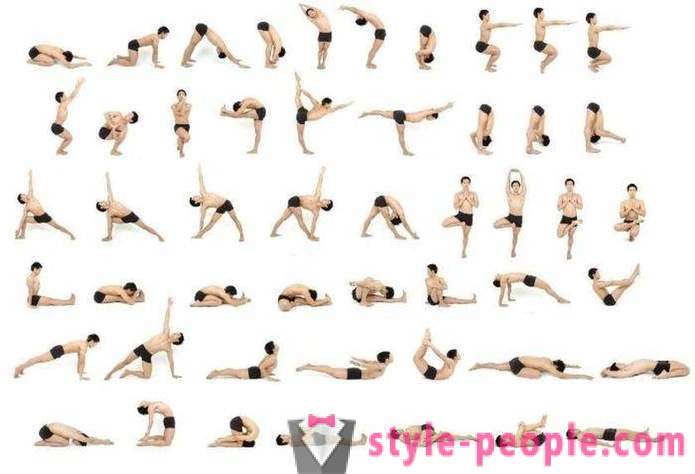Yoga Poses: 7 safety rules
Despite the fact that yoga is not an extreme sport, to the fulfillment of its exercise should be treated with caution. Yoga postures have a significant impact on the different body parts, joints, ligaments, spine and knees. And in the classroom errors can lead to serious injury.

Rule 1: Find an experienced instructor
Of course, the ideal option - it is a class with an experienced professional, who not only tell all the nuances and subtleties, but also pick up these yoga postures that are best suited to a particular person and help restore health as quickly as possible. When choosing an instructor should first pay attention to his seniority, place of training and direction.
Rule 2: Follow the spine
If performed yoga postures cause pain in the lower back, neck or back, it is necessary to tell your instructor. In the cervical region may appear discomfort during improper execution Sirshasana (headstand) and Sarvangasana ( "Birch"). In addition, abnormal forward bends and backbends can cause damage to the lumbar spine. If you experience discomfort or pain, these exercises should be removed from the complex, or ask your teacher to monitor the process of their implementation. At inclinations should keep your back flat, and can not use force during deflections. If necessary, it would be better to reduce a little range of motion. Remember the principle kontrpoz: after bending forward, arch your back and then lean to the left, lean to the right.

Rule 3: Avoid over-stretching
Regardless of what is currently running pose, yoga involves carefully metered load. Should not rush to the development of complex asanas. Every session should begin with a mandatory warm-up, and in the construction of the entire complex of exercise you should adhere to the principle "from the most simple - to the most complex."
Rule 4: Take care of the knee joints
Any posture in yoga to be performed slowly and constantly listening to the signals your body. Particular caution observe when performing Padmasana (lotus posture) and other postures, which include "lotus" elements. Errors and haste in such exercises can cause knee pain and is known to damage the knee - the most common injury in Yoga for beginners. So avoid the painful sensation and discomfort in the knees when performing these asanas.
Rule 5: If you see bad, take care of vision
All those who wear glasses or lenses, caution should be exercised in carrying out the slopes from a seated position and inverted postures. These exercises promote blood flow to the eyes and the head, which can adversely affect vision. So people better to practice asanas Supta Baddha Konasana and Viparita Karani - they are very beneficial to the eyes.

Rule 6: If arthrosis or varicose avoid prolonged sedentary postures and poses standing
If the disease is in the advanced stages, such exercises as Virasana, Siddhasana, Vardzhasana and Padmasana is strongly recommended to exclude from its complex. In this case, a good effect is given all inverted yoga poses, but they need to develop gradually and carefully. Try practicing Pavanamaktasanu (relieves tension in the veins) and Sarvangasanu ( "Birch") - they well help with varicose veins. Arthrosis would be useful to learn Matiasanu (posture fish) Halagasanu (posture bear) Budzhangasanu (pose Cobra) Shasankasanu (rabbit pose) Schalabgasanu (position locusts), Ardha-Mat-tsenndriyasanu (spinal twist) and Pada-Hastasanu (slopes forward). Rule 7: Women should take into account the monthly cycle
The first few days after the onset of menstruation is best to eliminate any practice. Its program and load need to be varied in accordance with the state of health. Naturally, during the cycle should be removed from all of the complex asanas, which compress the belly, deep bending and twisting, with strong voltage poses the press, as well as all the complex and difficult asanas. In addition, it is not necessary praktivat inversions: it can lead to endometriosis. For ease menstrual cramps fit such postures as the Mardzhariasana, Virasana Gianni Sirshasana, Upavishtha Konasana and Baddha Konasana. At this time it is better to carry out technology associated with deep relaxation, breathing and light exercise.













































